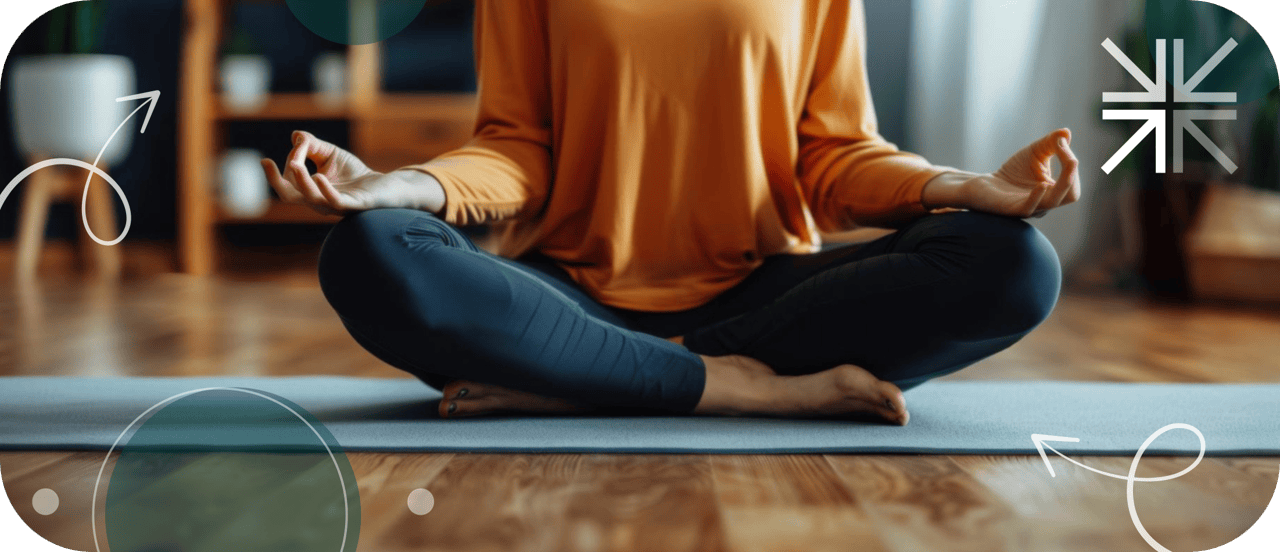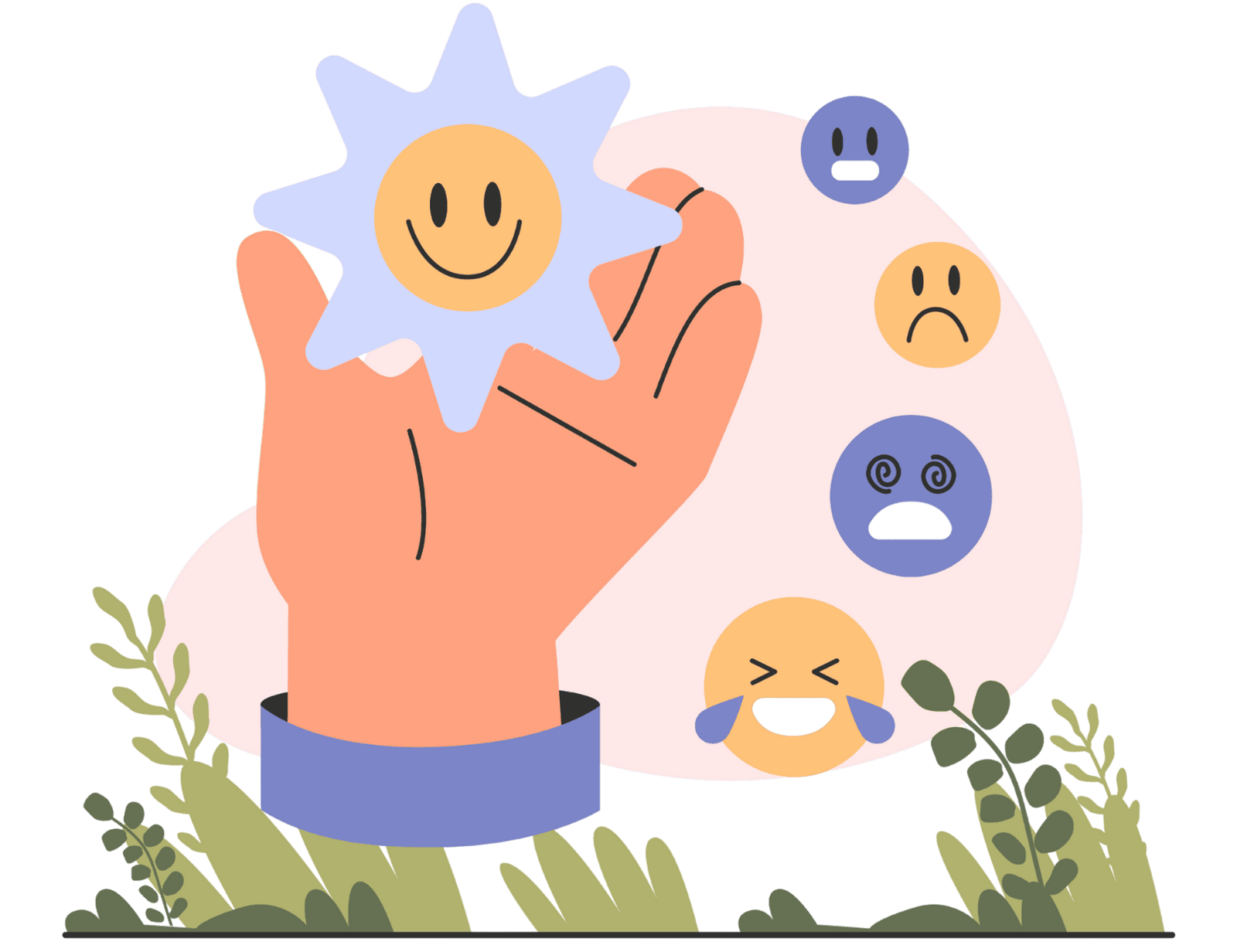
You’re sitting at your desk trying to focus. Your inbox is overflowing, your phone won’t stop buzzing, and your thoughts are spinning faster than you can catch them. You’re frazzled and just one minor annoyance away from snapping at your houseplant.
It’s in moments like these where grounding techniques can make all the difference. They’re simple, easy to do, and surprisingly effective tools you can use to help hit pause and reconnect with the present moment.

In the world of mental health, grounding is a practice that shifts your attention away from anxious or overwhelming thoughts and brings you back to the here and now. It’s about anchoring yourself in your body, your breath, and your surroundings so you can interrupt stress spirals and regain clarity.
Grounding can be especially helpful when you are:
• Feeling anxious, panicked, or overstimulated• Caught in a loop of negative thoughts• Disconnected from your environment or emotions• Facing high-stress situations (even small ones)
When stress kicks in, your nervous system can go into overdrive. Your heart rate spikes, your breaths shorten, and your mind leaps into the future or the past. Grounding techniques pull you out of that reactive mode by re-engaging your senses. Research shows these practices can calm the amygdala (your brain’s fear center), lower cortisol levels, and restore a sense of control and safety.
1) The 5-4-3-2-1 Method
This popular method walks you through your five senses to anchor you in your environment. Try naming:
- 5 things you can see – Colors, shapes, or patterns around you
- 4 things you can feel – The chair under you, your clothes, your breath
- 3 things you can hear – Distant voices, the hum of electronics, birds outside
- 2 things you can smell – Coffee, hand lotion, fresh air
- 1 thing you can taste – Water, a mint, or the taste in your mouth
It’s structured, calming, and easy to do anywhere.
2) Box Breathing
Commonly Used by athletes, box breathing helps settle your body by regulating your breath.
Breathe in for 4 counts → Hold for 4 → Exhale for 4 → Hold for 4.
Repeat this process for several rounds. This rhythm soothes the nervous system and helps break the cycle of anxious thinking.
3) Try a Temperature Change
Splash cold water on your face, sip a hot drink, or hold something cool. These sensory jolts give your brain a physical reset, pulling you out of your head and into your body.
4) Grounding with Texture
Touch something with an interesting or distinct texture like a smooth stone, a bumpy coaster, or even your shirt sleeve. Focus on the sensation. Is it warm or cool? Soft or rough? This tactile focus draws attention away from racing thoughts.
5) Movement Reset
Even small physical movements can disrupt the buildup of mental tension and shift your focus. Try stretching your arms overhead, rolling your shoulders, or firmly pressing your feet into the floor. Movement shifts energy, signals safety to the brain, and reconnects you to your physical space.
Luckily, grounding doesn’t require a quiet room or meditation cushion. It’s something you can use on the go, after a tough conversation, or any moment that feels like too much. The next time you’re overwhelmed, simply pause, breathe and notice your surroundings. Sometimes that’s all it takes to clear your head and find a sense of control again.
Want to learn more? Check out the links below for more helpful resources!

Emotional Wellness
It's not just about feeling happy all the time; it's about recognizing, understanding, and effectively managing a wide range of emotions.

Stress Relievers

Tools & Resources for Mindfulness
Mindfulness is not a technique, it’s a learned skill of being fully in the present moment.
